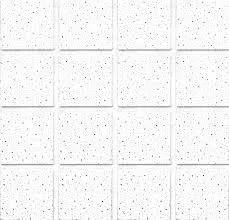Dec . 06, 2024 20:32 Back to list
drop ceiling t bar
Understanding Drop Ceiling T-Bar Systems
Drop ceilings, also known as false ceilings, are popular architectural features in modern buildings. They not only offer a practical solution for concealing unsightly infrastructure like pipes and electrical wiring but also contribute to the aesthetic appeal and acoustics of a space. One important component of drop ceilings is the T-bar grid system, which serves as the framework that supports ceiling tiles. This article will provide an overview of the drop ceiling T-bar system, emphasizing its components, installation process, benefits, and considerations.
What is a Drop Ceiling T-Bar?
The T-bar is the primary structural element in a drop ceiling grid system. It is named for its T shape, typically formed from lightweight metal, which is interlocked to create a supportive grid. The grid is installed parallel to the floor, creating a space between the original ceiling and the new ceiling layer. This cavernous space is ideal for housing insulation, air ducts, and other utilities while allowing easy access for maintenance.
The T-bar grid is designed to accommodate various ceiling tiles, which can be made from materials such as mineral fiber, gypsum, or vinyl, offering flexibility in design and functionality. The configuration of the T-bar—whether it’s a standard 2x2 or 2x4 layout—can be customized based on the aesthetic and acoustic needs of the space.
Installation Process
Installing a drop ceiling T-bar system can be a straightforward DIY project or a professional job, depending on the complexity of the space. Here’s a brief breakdown of the installation process
1. Planning Before installation, it is crucial to measure the room accurately to determine the amount of T-bar and ceiling tiles needed. Considerations should include the desired ceiling height and the location of any lights, vents, or other fixtures.
2. Setting the Height The first step is to establish a reference point around the room’s perimeter for the new ceiling height. This involves using a chalk line or laser level to mark the desired height for the T-bars.
3. Installation of Wall Angle The next step is to secure wall angles in place along the previously marked lines. These angles create the border for the T-bar grid. They should be firmly attached to the walls with screws.
4. Suspending the Main Tees The main T-bars are then hung from the ceiling joists using wire hangers. These main tees will intersect with the cross tees to create the grid structure.
5. Adding Cross Tees Cross tees are inserted into the main tees to complete the grid layout. They can be cut if necessary to fit the specific dimensions of the room.
drop ceiling t bar

6. Installing Ceiling Tiles Finally, the ceiling tiles are simply laid into the grid, completing the drop ceiling system.
Benefits of Drop Ceiling T-Bar Systems
There are numerous advantages to using a drop ceiling T-bar system in residential or commercial spaces
- Aesthetic Flexibility The ability to choose from a wide range of tiles allows for creative expressions that match the decor of any room.
- Acoustic Control Specialized acoustic tiles can help manage sound, making drop ceilings ideal for offices, schools, and theaters.
- Easy Access The design enables quick access to plumbing, electrical wiring, and HVAC systems without extensive renovations.
- Energy Efficiency The space created by the drop ceiling can be used for insulation, contributing to enhanced energy efficiency within a building.
Considerations
While drop ceiling T-bar systems are beneficial, there are some considerations to keep in mind. The height loss incurred with a drop ceiling may not be suitable for spaces with already low ceilings. Additionally, the choice of materials and tile design can significantly affect the overall durability and performance of the ceiling, which necessitates thorough research before selecting components.
Conclusion
The drop ceiling T-bar system is an effective solution for various architectural needs, blending practical utility with aesthetic considerations. Its versatility, coupled with the ease of installation and maintenance, makes it a favored choice for both commercial and residential applications. Understanding the components, benefits, and installation process of this system can help ensure a successful renovation or new construction project.
-
Durable Ceiling T Grid Systems | Easy InstallationNewsAug.29,2025
-
PVC Gypsum Ceiling: Durable, Laminated Tiles for Modern SpacesNewsAug.28,2025
-
Pvc Gypsum Ceiling Is DurableNewsAug.21,2025
-
Mineral Fiber Board Is DurableNewsAug.21,2025
-
Ceiling Tile Clip Reusable DesignNewsAug.21,2025
-
Ceiling T Grid Modular DesignNewsAug.21,2025







